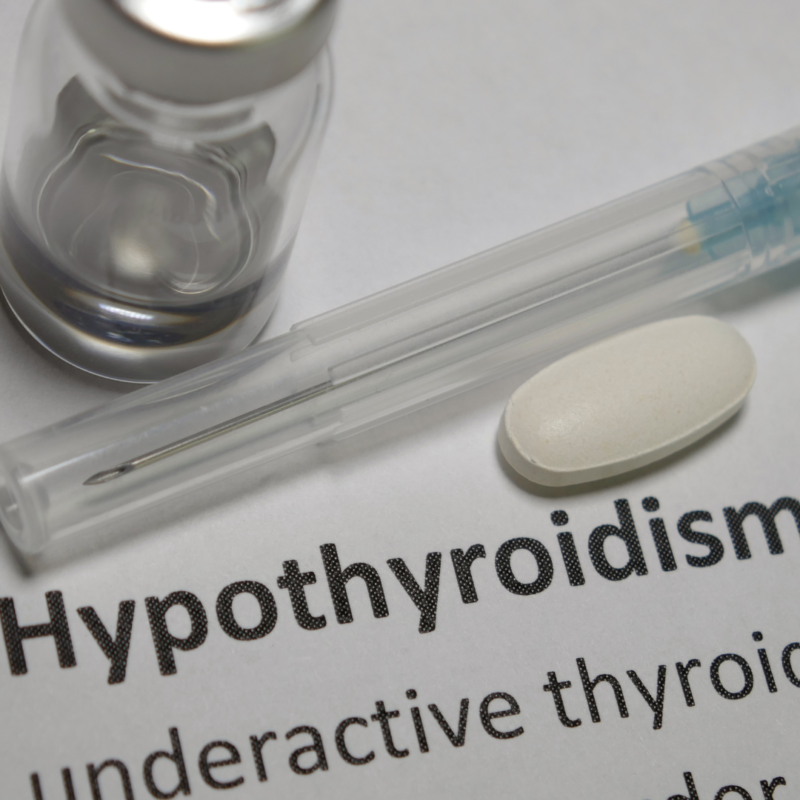SEMAGLUTIDE AND HYPOTHYROIDISM
Recently, semaglutide has been found to have potential benefits for individuals with hypothyroidism. Hypothyroidism is a condition in which the thyroid gland does not produce enough thyroid hormone. This can lead to a range of symptoms, including fatigue, weight gain, depression, and cognitive impairment. Treatment typically involves taking synthetic thyroid hormone replacement medication, such as levothyroxine. However, some individuals with hypothyroidism may continue to experience symptoms even with proper treatment.
A study published in the Journal of Clinical Endocrinology & Metabolism in 2021 investigated the effects of semaglutide on individuals with both type 2 diabetes and hypothyroidism. The study involved 132 randomly assigned participants to receive either semaglutide or a placebo for 26 weeks. The results of the study showed that the participants who received semaglutide had significant improvements in their thyroid function compared to those who received the placebo.
Specifically, the participants who received semaglutide had greater free thyroxine (FT4) levels and a greater decrease in thyroid-stimulating hormone (TSH) levels compared to the placebo group. This suggests that semaglutide may be able to improve thyroid function in individuals with hypothyroidism.
One possible mechanism by which semaglutide may improve thyroid function is through its effects on the gut microbiome. There is growing evidence that the gut microbiome plays an important role in regulating thyroid function. Semaglutide has been shown to have beneficial effects on the gut microbiome, which could in turn improve thyroid function.
Another possible mechanism is through the regulation of inflammation. Hypothyroidism is associated with chronic low-grade inflammation, and semaglutide has been shown to have anti-inflammatory effects. By reducing inflammation in the body, semaglutide may be able to improve thyroid function.
Determining if semaglutide is appropriate for you
It is important to note that the study mentioned above was conducted on individuals with both type 2 diabetes and hypothyroidism, so it is unclear whether semaglutide would have the same effects in individuals with hypothyroidism alone. Further research is needed to investigate this.
While the findings of this study are promising, it is important to approach them with caution. Semaglutide is a medication that has potential side effects and is not suitable for everyone. It is important to speak with a healthcare provider before starting any new medication, including semaglutide, to determine if it is appropriate for you.

Semaglutide is not a substitute for thyroid hormone replacement medication
In addition, it is important to continue taking any prescribed thyroid hormone replacement medication as directed by a healthcare provider. Semaglutide should not be used as a substitute for thyroid hormone replacement medication.
It is also important to note that there may be other options for improving thyroid function in individuals with hypothyroidism. Lifestyle factors such as diet, exercise, and stress management can all play a role in thyroid function. Some individuals may benefit from working with a healthcare provider or registered dietitian to develop a personalized plan to optimize thyroid function.

Semaglutide has shown promise in improving thyroid function
In conclusion, semaglutide has shown promise in improving thyroid function in individuals with both type 2 diabetes and hypothyroidism. However, further research is needed to determine whether it would have the same effects in individuals with hypothyroidism alone. It is important to speak with a healthcare provider before starting any new medication, including semaglutide, and to continue taking any prescribed thyroid hormone replacement medication as directed.

